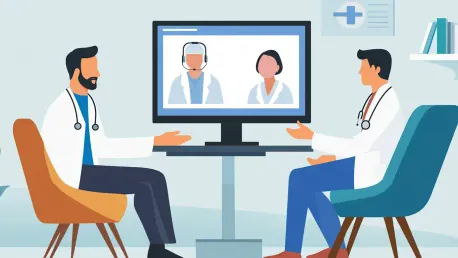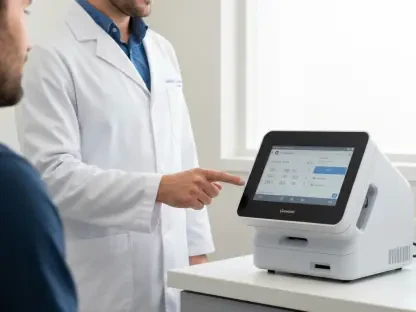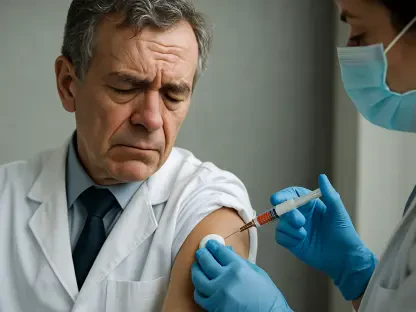Ivan Kairatov is a Biopharma expert, with deep knowledge of tech and innovation in the industry and experience in research and development. Today, we will be discussing his insights on two recently introduced health policy legislation aimed at improving telehealth access and expediting lung cancer screenings.
Can you explain the primary objectives of the Permanent Telehealth from Home Act you recently introduced?The Permanent Telehealth from Home Act primarily aims to remove the originating site and geographic limitations for telehealth services, allowing people to access telehealth care from anywhere. This would ensure that patients, especially seniors, have uninterrupted access to telehealth services beyond the current expiration date set in March.
Why do you believe it’s important to remove the originating site and geographic limitations for telehealth services?Removing these limitations is crucial because it democratizes access to healthcare. It means that even those in remote or underserved areas can receive quality medical attention without traveling. This is particularly important for individuals with low mobility or those unable to visit a doctor in person.
How has the current telehealth access, set to expire in March, benefitted patients during its implementation?The current telehealth access has provided significant benefits to patients by offering convenient and timely medical consultations, which has been crucial during the pandemic. It has enabled many patients to receive ongoing care, mental health support, and emergency services without the risk and logistical challenges of in-person visits.
How do you anticipate making limitless telehealth access permanent will impact seniors in your district?Making telehealth access permanent will greatly benefit the nearly 200,000 seniors in my district. It will allow them to continue accessing vital healthcare services, reducing barriers to care and potentially improving their health outcomes through more consistent monitoring and treatment.
What are some of the critical health care services that seniors will continue to access if the telehealth provision becomes permanent?If telehealth provisions become permanent, seniors will have continued access to emergency medical attention, routine medical follow-ups, mental health services, and specialized care that they might otherwise struggle to obtain due to mobility issues or geographic constraints.
Can you share your thoughts on working with the Trump administration to make this telehealth flexibility permanent?Working with the administration is key to ensuring the success of this initiative. We want to build on the progress made so far and institutionalize these benefits to ensure they are available to future generations. It’s about putting patients first and removing unnecessary barriers to care.
Representative Mike Thompson mentioned that telehealth could save money, time, and lives. Can you provide examples or data to support these claims?Telehealth can indeed save money by reducing the need for physical infrastructure and cutting down on travel expenses for patients. It can save time by eliminating waiting times in clinics, and ultimately, it can save lives by offering timely access to medical advice and emergency consultations that might otherwise be delayed.
Regarding the Lung Cancer Screening and Prevention Act, what specific changes are you proposing to expedite the approval process for new lung cancer screening tests?We propose streamlining the approval process so that new lung cancer screening tests can be evaluated and approved more efficiently. This involves reducing redundancy between the FDA and USPSTF approval processes and creating a more seamless pathway to bring these tests to market faster.
Why do you think the current approval process, which involves both the FDA and the USPSTF, is too lengthy?The current process is overly lengthy because it requires sequential approvals from multiple agencies, each with its own set of criteria and timelines. This can delay the availability of crucial tests by up to five years, which is time that patients at risk for lung cancer simply can’t afford.
How do you propose balancing the need for thorough safety evaluations with the need for quicker access to new screening tests?We believe that thorough safety evaluations are critical, but they can be conducted more efficiently. By coordinating efforts between the FDA and USPSTF and eliminating redundant steps, we can maintain rigorous safety standards while reducing the total time required for approval.
Can you elaborate on how bureaucratic red tape has hindered access to advanced lung cancer testing?Bureaucratic red tape often results in unnecessary delays and hurdles that prevent new technologies from reaching patients promptly. This stifles innovation and limits access to potentially life-saving screenings and treatments, especially for vulnerable populations.
What role does early detection play in lung cancer treatment, and how will your bill improve early detection rates?Early detection is crucial in lung cancer treatment because it significantly increases the chances of successful treatment and survival. Our bill aims to improve early detection rates by making advanced screening methods more readily available, thereby catching the disease in its earlier, more treatable stages.
Have you received feedback from medical professionals or patients regarding the need for expedited access to lung cancer screenings?Yes, we’ve heard from numerous medical professionals and patients who have expressed the urgent need for quicker access to advanced lung cancer screenings. They emphasize that early detection can save lives and that the current delays are unacceptable.
How do you see the implementation of these two bills improving healthcare quality and accessibility overall?The implementation of these bills will drastically improve healthcare quality and accessibility by ensuring that patients have timely access to critical healthcare services and advanced medical screenings. This will lead to better health outcomes, reduced healthcare costs, and enhanced patient satisfaction.
What would you say to critics who might argue that easing regulations could compromise safety or quality?Safety and quality are our top priorities, and we believe that by streamlining processes and eliminating redundant steps, we can maintain high standards while also improving access. Easing regulations does not mean compromising rigor; it means making the system more efficient.
What steps can be taken to ensure that the policies established by these bills remain effective in the long term?To ensure long-term effectiveness, it’s important to continually review and adjust policies based on feedback from healthcare providers and patients. Regular evaluations and updates will help to maintain the balance between accessibility and safety.
you have any advice for our readers?Stay informed and engaged with healthcare policy developments, as these changes directly impact the quality and accessibility of health services available to you and your loved ones. Advocate for policies that improve access to care and push for innovations that can save lives.









